How to Fit Your Dog's Prong Collar
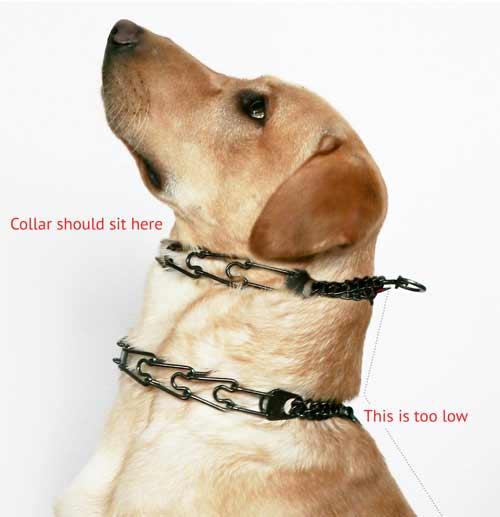
I train dogs with prong collars. There are very few dogs that I would not train with a prong collar. I recommend them to new dog owners, new trainers, and people who own dogs with behavioral problems. While some think a prong looks nasty, the fact is they are far more humane than a normal choke collar.
The biggest problem with prong collars is that new dog owners don't know how to put them on, how to size them, or how to have their dog wear them. This article will address these issues.
Normal choke collars need to be ordered by length (i.e., 22 inches long, etc.) Prong collars are ordered by size (small, medium, large, or extra large). They all come in a standard length which is adjusted to fit the neck of the dog by removing or adding links to the collar.
Prong collars are meant to be put on and taken off before and after daily training sessions. Unlike a choke collar that is often left on the dog all the time (in some cases this can be a dangerous practice). Easily put your dog's prong collar on and take it off with Leerburg's Small Prong and Med/Large Prong Quick Release Buckles.
A common problem new trainers have is they don't remove enough links to get the correct snug fit. When that happens is the collar hangs down on the dog’s neck, which results in the collar not working the way that it was designed. A prong collar should fit the way you see it in the photo of Sonny, our Yellow Lab.
The correct position for a prong collar is to sit right behind the ears and up under the jawline like you see in the first photo above. The photos below show how many people mistakenly let a dog wear a prong and the correct way to wear a prong.
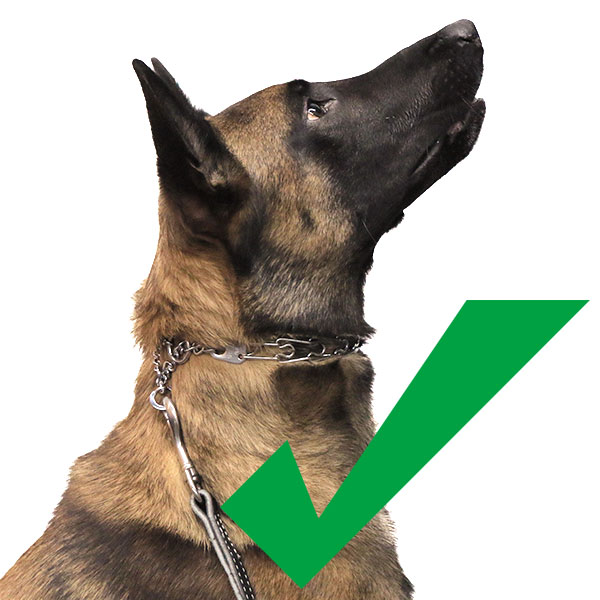
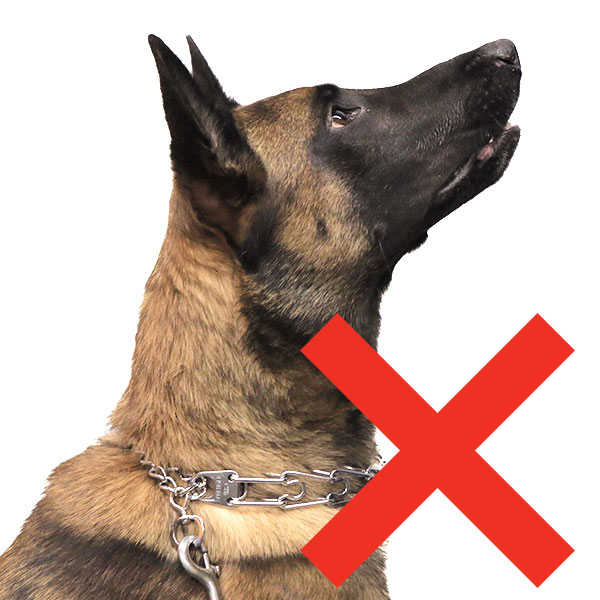
Sizing the Prong
Adding and Removing Links
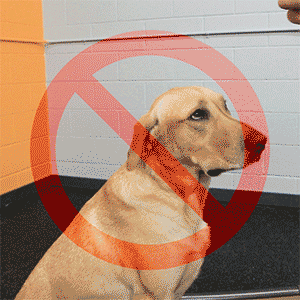
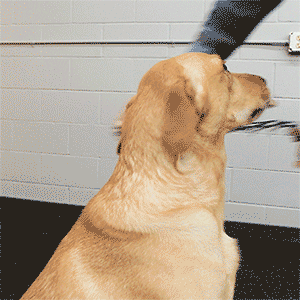
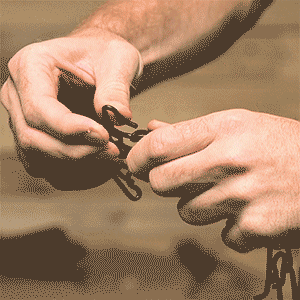
Some people mistakenly try and put a prong collar on their dog by slipping it over the dog's head and then moving it down on the neck. That's wrong. Prong collars are designed to be put on and taken off by unhooking links and unsnapping the collar from around the neck.
The right way to unhook a collar is to pinch one of the links and pull it apart. Taking the collar off is always easier than putting it back on with this method.




Proper Placement Once the Collar is on the Dog
Most of the time when a prong collar is put on a dog, the handler connects the collar with the links behind the dog's ears—this is the easiest place to access the links. Once the collar is on the neck, the rings to connect the leash to are under the dog's chin. This is incorrect! You must rotate the collar so the rings are in the proper spot on the dog's neck. This is usually on the right side of the neck.
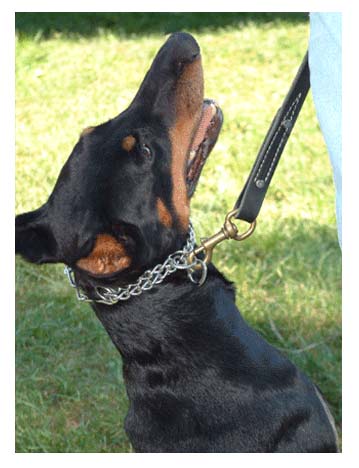
Prong Collar Sizing Video
If you're still unsure how to size the prong collar, watch this short and quick video for a quick demonstration on how we put on a prong collar.
Types and Styles of Prong Collars

A cost-effective solution.

Will hold its shape which prevents links from wearing out over time.

For dogs with skin allergies.
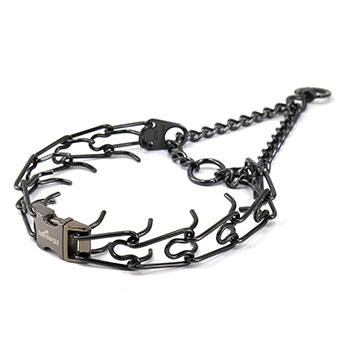
Uses a buckle making it quick and easy to snap on. Also available in Small.

Used for small dogs. Also used by obedience trainers for large dogs. Allows for a more subtle, yet evenly spread out correction on larger dogs.

Does not require a back up collar. Perfect for walking your dog. Prevents unwanted attention from strangers.
Size of Prongs
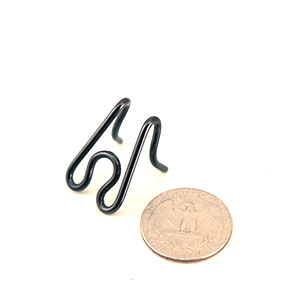
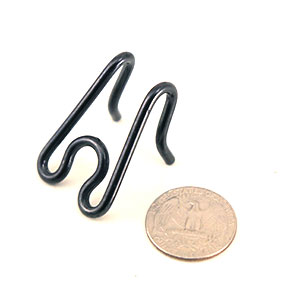
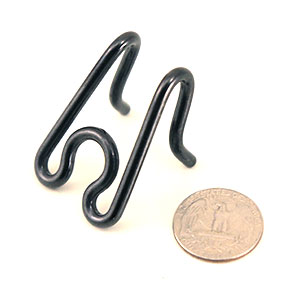
Dead Ring vs. Live Ring
There are two ways to attach a leash to the prong collar. It can either be connected to the live-ring or the dead-ring. Which one you choose will depend on the dog and what you are trying to do.
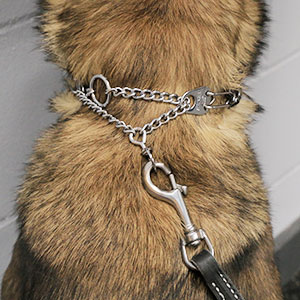

When the snap is on the live-ring the correction is amplified because more slack is taken out of the collar when the correction is given and the leash is popped. The live-ring is used if a dog does not respond well to the snap being placed on the dead-ring.
The first time a prong is used on a dog the snap should be on the dead-ring. When a correction is applied and the leash is attached to the dead-ring the correction will not take as much slack out of the collar as when it is attached to the live-ring.
Recommended Safety System for All Prong Collars
A perfect safety procedure is to use along with a prong is a Dominant Dog Collar™. I offer this advice to ALL those trainers who use prong collars.
It is not unheard of for a mistake to happen and a prong collar comes apart when you need it the most. By having a dominant dog collar on the dog at the same time as the prong, this will never be a problem. Simply attach the clip on the leash to both the prong and the ring on the dominant dog collar.
The Dominant Dog Collar is designed specifically for dominant and aggressive dogs to control their behavior. When used appropriately, dominant dog collars are a humane alternative to prong and electric collars. This collar is not intended to give a painful correction. When used appropriately, tightening should take the air away from a dominant aggressive dog just enough to correct unwanted behavior. Some dogs will get overstimulated by a prong collar, resulting in a more hectic and aggressive dog. Using a dominant dog collar correctly on aggressive dogs takes the drive and fight out of the dog.
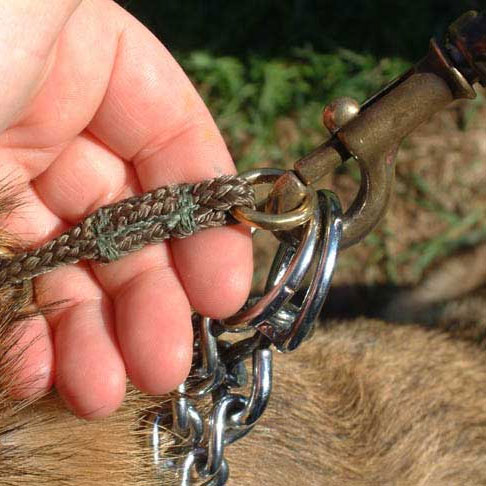
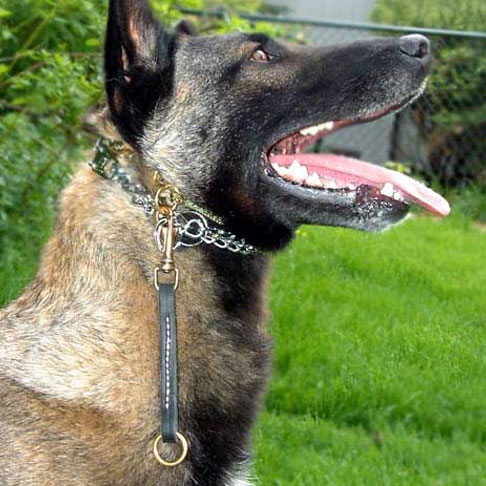
A helpful training tool that you can find only at Leerburg is the Prong Collar Leash. This Amish-made latigo leather leash has high-quality stainless steel snaps. This leash is made so that a prong collar is attached to one clip and Dominant Dog Collar™ (or backup collar) is attached to a second clip. There is a 6-inch tab attached to the clip end of the leash for the second collar. When or if the prong collar fails and comes off the dog, the second collar is already attached without interfering with the prong collar corrections.







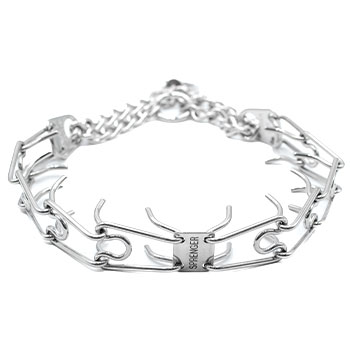

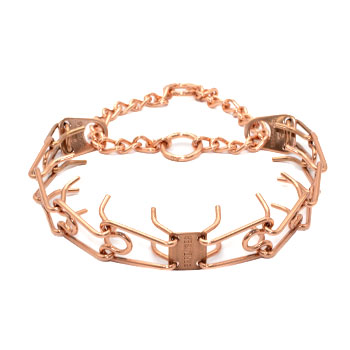
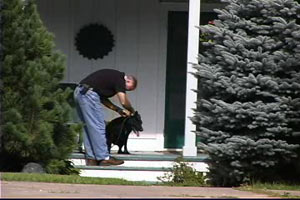
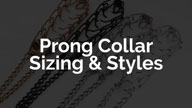
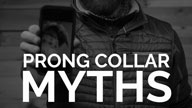
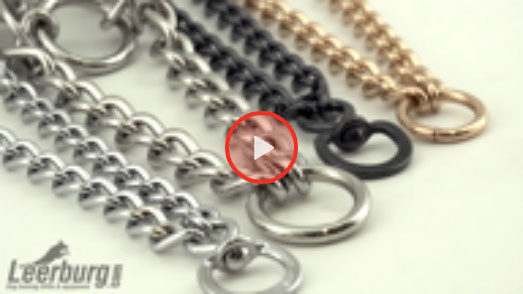
Ask Cindy.